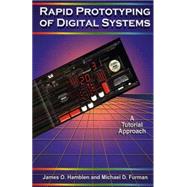|
2 | (28) | |||
|
6 | (3) | |||
|
9 | (1) | |||
|
10 | (2) | |||
|
12 | (2) | |||
|
14 | (3) | |||
|
17 | (1) | |||
|
17 | (4) | |||
|
21 | (1) | |||
|
22 | (1) | |||
|
23 | (1) | |||
|
24 | (1) | |||
|
24 | (1) | |||
|
24 | (1) | |||
|
25 | (5) | |||
|
30 | (8) | |||
|
31 | (1) | |||
|
31 | (1) | |||
|
31 | (3) | |||
|
34 | (2) | |||
|
36 | (2) | |||
|
38 | (14) | |||
|
40 | (1) | |||
|
41 | (1) | |||
|
42 | (4) | |||
|
46 | (2) | |||
|
48 | (1) | |||
|
48 | (1) | |||
|
49 | (1) | |||
|
49 | (3) | |||
|
52 | (12) | |||
|
52 | (1) | |||
|
52 | (2) | |||
|
54 | (1) | |||
|
55 | (1) | |||
|
56 | (1) | |||
|
57 | (1) | |||
|
58 | (1) | |||
|
59 | (1) | |||
|
59 | (5) | |||
|
64 | (12) | |||
|
65 | (1) | |||
|
66 | (1) | |||
|
67 | (1) | |||
|
68 | (1) | |||
|
69 | (2) | |||
|
71 | (1) | |||
|
72 | (1) | |||
|
73 | (3) | |||
|
76 | (24) | |||
|
76 | (1) | |||
|
77 | (1) | |||
|
78 | (1) | |||
|
78 | (1) | |||
|
79 | (2) | |||
|
81 | (1) | |||
|
82 | (1) | |||
|
82 | (2) | |||
|
84 | (1) | |||
|
84 | (1) | |||
|
85 | (2) | |||
|
87 | (1) | |||
|
88 | (1) | |||
|
89 | (3) | |||
|
92 | (2) | |||
|
94 | (1) | |||
|
95 | (1) | |||
|
95 | (5) | |||
|
100 | (20) | |||
|
100 | (2) | |||
|
102 | (1) | |||
|
102 | (1) | |||
|
103 | (1) | |||
|
103 | (1) | |||
|
104 | (4) | |||
|
108 | (2) | |||
|
110 | (3) | |||
|
113 | (1) | |||
|
114 | (1) | |||
|
115 | (5) | |||
|
120 | (14) | |||
|
121 | (1) | |||
|
122 | (4) | |||
|
126 | (3) | |||
|
129 | (1) | |||
|
130 | (4) | |||
|
134 | (20) | |||
|
134 | (1) | |||
|
134 | (3) | |||
|
137 | (1) | |||
|
138 | (2) | |||
|
140 | (1) | |||
|
140 | (1) | |||
|
141 | (1) | |||
|
141 | (1) | |||
|
142 | (3) | |||
|
145 | (2) | |||
|
147 | (1) | |||
|
148 | (1) | |||
|
149 | (1) | |||
|
149 | (2) | |||
|
151 | (3) | |||
|
154 | (12) | |||
|
154 | (1) | |||
|
155 | (1) | |||
|
155 | (1) | |||
|
155 | (3) | |||
|
158 | (2) | |||
|
160 | (3) | |||
|
163 | (1) | |||
|
164 | (1) | |||
|
164 | (2) | |||
|
166 | (6) | |||
|
168 | (1) | |||
|
168 | (1) | |||
|
169 | (1) | |||
|
170 | (1) | |||
|
170 | (1) | |||
|
170 | (2) | |||
|
172 | (24) | |||
|
172 | (1) | |||
|
172 | (1) | |||
|
173 | (1) | |||
|
174 | (2) | |||
|
176 | (5) | |||
|
181 | (7) | |||
|
188 | (1) | |||
|
189 | (1) | |||
|
190 | (6) | |||
|
196 | (25) | |||
|
196 | (3) | |||
|
199 | (1) | |||
|
200 | (3) | |||
|
203 | (2) | |||
|
205 | (3) | |||
|
208 | (2) | |||
|
210 | (2) | |||
|
212 | (1) | |||
|
213 | (1) | |||
|
214 | (1) | |||
|
215 | (1) | |||
|
216 | (5) | |||
| Appendix A: Generation of Pseudo Random Binary Sequences | 221 | (2) | |||
| Appendix B: MAX+PLUS II Design and Data File Extensions | 223 | (2) | |||
| Appendix C: UP 1 Pin Assignments | 225 | (3) | |||
| Glossary | 228 | (9) | |||
| Index | 237 | (3) | |||
| About the Accompanying CD-ROM | 240 |








